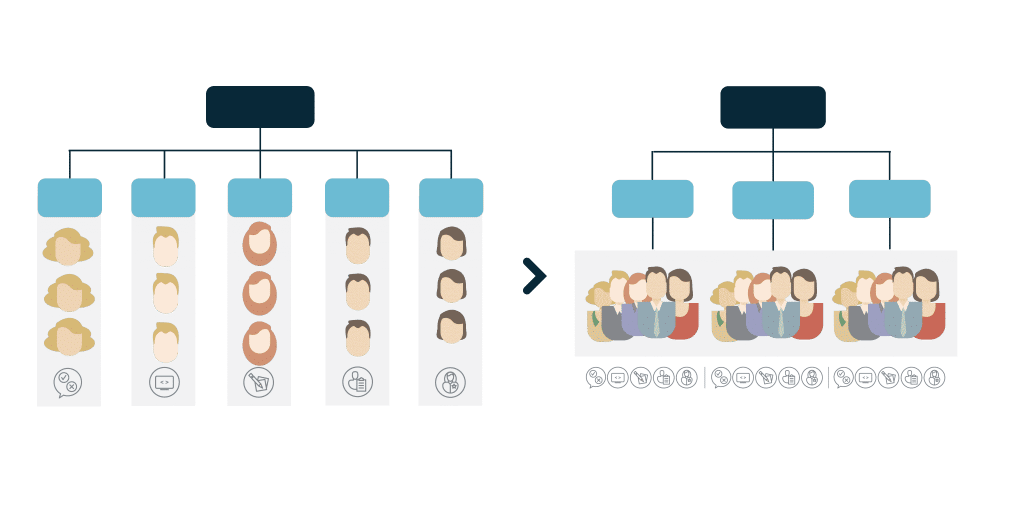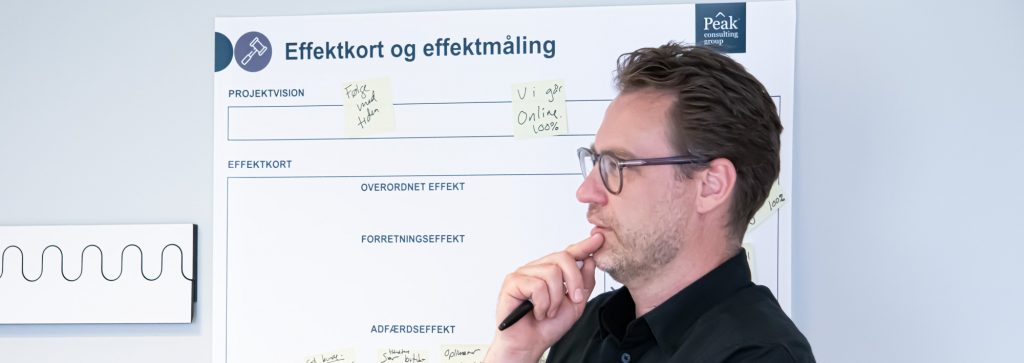The Spotify-model points towards a future with more focus on self-management, interdisciplinarity and innovation. This makes it a highly relevant solution when discussing agility. But what is the Spotify-model really, and why is it a good idea to keep this alternative in mind, while planning to start your agile transformation?
On the surface, words like tribes, squads, chapters and guilds can sound intimidating. But with the Spotify-model you actually create a simple framework with more room for innovation and freedom with responsibility, than you get with similar frameworks such as SAFe. Become familiar with the model and learn how it can strengthen both job satisfaction and business.
What is new about the Spotify-model?
Maybe you already know that Spotify is a Swedish music service, that since 2008 has delivered a regular subscription with free access to all kinds of music. But the more interesting thing about it, is the culture and the way they work internally at Spotify.
Their model is profoundly person-centered and sets itself apart from the traditional command and control approach by prioritizing autonomy, motivation and fun. At the core of the Spotify-model is a mature understanding of the fact that autonomy is not the opposite of alignment, but that the two are dependent on one another.
The person who knows how to deliver a strong why, also has a higher degree of freedom to allow their employees to take ownership of the solution’s why without extra administration or cost. The mantra goes: tightly aligned, loosely coupled. In plain English, this translates to freedom with responsibility. This makes it a strong method for utilizing the enormous potential of knowledge workers, but also for motivating the simple things and creating space for innovation and idea generation.

It is all about interdisciplinarity
The key to understanding the Spotify-model is first and foremost to think in terms of interdisciplinarity and cross-functional teams. Instead of assigning employees to teams consisting of identical professional competencies, you should put together teams where different disciplines are represented. These combinations are called squads. A squad typically consists of up to 8 people with professional competencies such as developer, QA, UX designer, Subject matter expert etc. The squad decides for themselves, how they should prioritize and solve their tasks, but this is of course within a framework, which is decided according to their mission and the product they need to develop.
The mission is owned by a product owner, working with the rest of the squad and representing the business. The coaching and facilitating for each squad is done by a scrum master or agile coach. A collection of squads is called a tribe. A tribe typically consists of 150 employees, working within the same domain or on the same task, but in different squads with individual missions.
Instead of departments, the different professional competencies are separated into so-called ‘chapters’, run by a chapter lead. A chapter can for example assemble all UX designers across different squads into a tribe. The chapter lead functions as a sort of line-manager across the members’ squads, but they are first and foremost responsible for professional competency and they work in a team themselves, on equal terms with other squad-members. Finally, there are guilds. These function as interest-groups across both squads, chapters and tribes and can be adapted to meet current needs.
Chapters (left) collects different professional competencies across the different squads and tribes. This can for example take the form of a design chapter, which is made up of just designers. But the members of a design-chapter are also divided between different squads (right), where they function as the sole designer of a team which also consists of developers, UX’ers etc.

Decisions have to be made by knowledgeable people
Besides rethinking the make-up of teams, the Spotify-model also presents new product-development methods with the agile approach “working software over comprehensive documentation”. The technique is surprisingly simple but requires self-discipline. It simply involves showcasing your finished work on a regular basis instead of tracking it using the typical “PowerPoint reporting”, where internal value streams risk organizing themselves according to internal hierarchies instead of customer needs. Spotify’s model is thereby an attempt at decentralized management, which attempts to hand over decision-making power to those who have the information, instead of those at top-management level.
When we organize ourselves in this way, information does not need to pass through several hierarchical levels and become obsolete within a report, before it reaches the director. Instead, progress can be tracked as finished work (or working-software, when it comes to IT), which can be published directly to an internal or external customer. The, for many people, intimidating labels like squads and tribes are not just new words for an office or a department, but have specific or technical definitions, which support the information stream on its way to the user, instead of creating organizational silos.
Why is this important?
With the Spotify-model, we are seeing another addition to the trend that breaks with regular work-life and increasingly focuses on motivation, engagement and self-management. For good or bad, the idea of the business’ man is replaced by a proactive and cross-disciplinary employee. And this does not ‘only’ have a positive impact on job satisfaction. It seems, that we have to join trends such as this, if we want to make money in the future.
According to BCG, there is a strong correlation between the heavy, hierarchical structures and the lowered productivity in the West. And this is even in spite of the enormous technological growth we have seen over the last many years. Spotify and other businesses like Netflix, that dare to remove rules and dogmas in order to get more from less, hint at how we can solve this crisis.
If innovation and productivity is to go hand-in-hand in your future business-model, the Spotify-model can therefore be an important tool for your organization.









